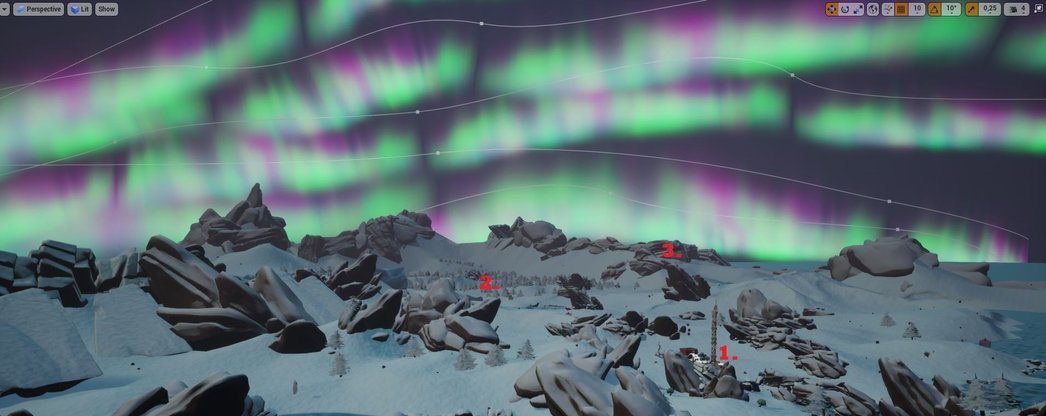Jesper Bentzer
LEVEL. NARRATIVE. DESIGN
Project: Outpost Glacier
During my time at Futuregames I along with many other students worked on Outpost Glacier as a part of our degree project, I mainly worked on the open-world level design and balanced the systems that spawned loot, creatures, and the areas where they should spawn.
When creating these areas I used our heat and food meters as a balancing tool to see how far the player could make it in the early game to figure out where and how far away each biome could be placed.
I made sure that each biome could be noticed by the player from their starting location or from higher ground. A place such as the forest could be spotted as the player started the game and the tall mountains were clear land marks with their peaks pointing the way the player could move.
Here we are standing on a nearby hill close to the main starting area looking out over the map and where we could move next.
- Players main base
- Forest Biome
- Rocky Biome
Rock Biome
Mountains cracked and ruptured have left many minerals exposed for the player to find and use in crafting new tools and buildings to help their survival. This biome was meant to be a late-game area for the player to explore using climbing equipment to traverse the different platoes and high shelfs of rock.
Cold winds howl between the rocks as the survivor harvests precious rocks, one swing at the time. Each hit echoing between the rocks, a sharp chirp interrupts him as many more joins in as the raptors jump him.
Ice Biome
Here players would be able to find rare metals and ores that have been revealed thanks to the land cracking apart and things falling down in between the cracks. But in this area, predatory animals also prowl around. These icy paths worked as a laborynth the player had to navigate through.
An icy cracked ravine spreads across the tundra, inside it is rare loot buried and scattered thanks to the wind and on the rigges prowls predatory animals
Forest Biome
In the forest berries and lumber can be found, two rare resources otherwise hard to find outside the forest. Both large predators and small friendly animals could be found making their nests inside the forest. We were early in the project but the idea was always to make the forest feel thick and claustrophobic.
The quiet forest casts strange shadows as the Aurora Borealis lights up the sky above, heavy footsteps can be heard as large beasts prowl closer to the unexpecting survivor harvesting lumber.
